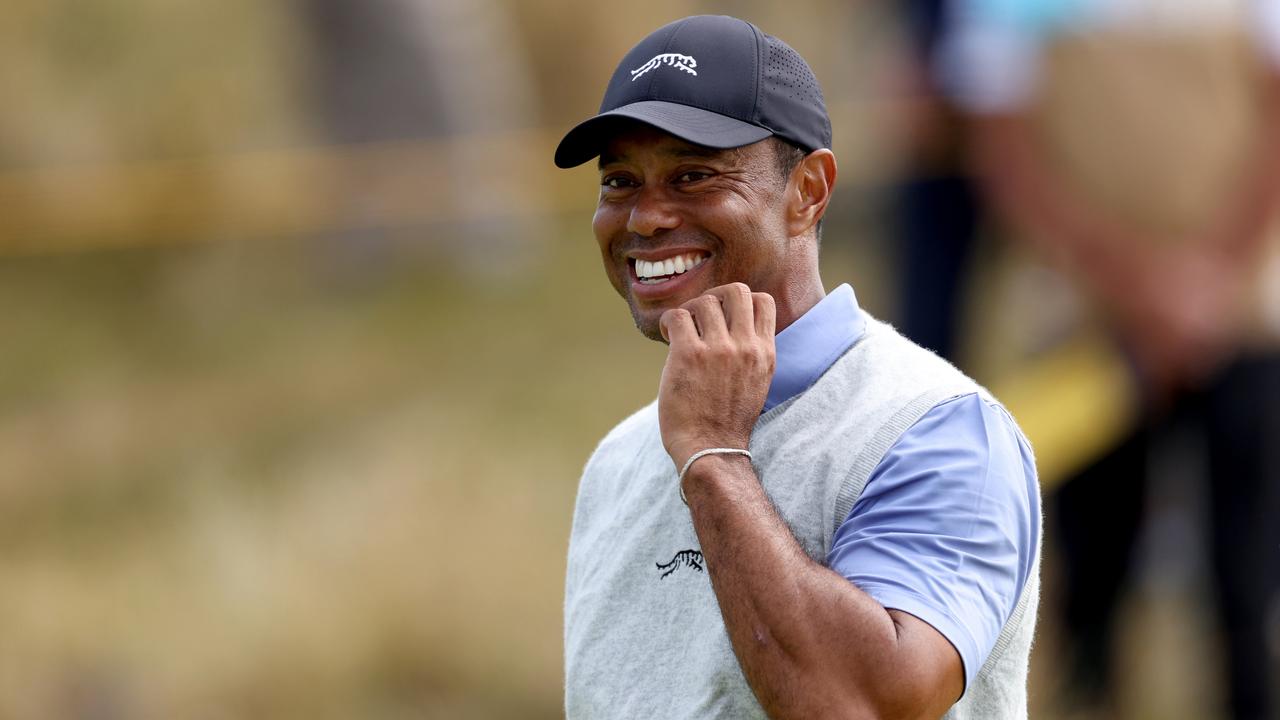Tennis
Tennis Mailbag: Why Stars Are Withdrawing From the Olympics

Submissions have been lightly edited for brevity and clarity.
Hey everyone …
• A short column this week. We’ll be back in a few days with the Wimbledon seed reports, and then coverage from SW19.
• Here’s the latest Served podcast with Andy Roddick.
• On Friday, Roddick and I will do a special Wimbledon draw edition of the podcast.
• Speaking of: “The USTA Foundation, the charitable arm of the United States Tennis Association Incorporated (USTA), today announced that tennis legend and former world No. 1 Andy Roddick will be honored with the Serving Up Dreams Award at the USTA Foundation’s annual Opening Night Gala on Aug. 26 at the U.S. Open.”
Gunter glieben glauchen globen …
Please explain to me [why] so many players have pulled out of the Olympics. For someone like Ben Shelton or Madison Keys or Ons Jabeur, why wouldn’t they want to represent their country?
Anon
• We talked about this on the podcast. It is not even July and the list of Olympic withdrawals—eligible players taking a pass—is so long it could be serialized. Two short answers:
1) Some of us—and I plead aggressively guilty—have overhyped the Olympics. (I put it slightly under a major, but above any other title in tennis.) I suspect this owes more to our own romantic notions than to reality. For some players, it is a career highlight. For others, it’s not worth the hassle and schedule disruption. It’s a kooky one-off that offers no prize money, no points and a lot of security lines.
2) This year is especially problematic for U.S. players in particular. You are leaving clay for grass, then going back to clay; back in Europe for the Olympics; before coming to the U.S. for hard courts. Again, for some players, this is no big deal. Novak Djokovic, to pick an obvious example, has been outspoken about his goal of gold. But imagine if you’re, say, Shelton. He is a young player, trying to build his game, ranking and brand, and peak for the U.S. Open, where he is defending semifinal points. His clay court skills are not equal to his hard court skills. He has traveled enough. He is a young player. And—this is critical—the next Olympic Games will be held in Los Angeles. Yes, nothing is guaranteed, and he may never get another chance and regret this RSVP. Yes, playing the Olympics at Roland Garros is the kind of experience that makes some of his colleagues’ bucket lists. But it’s understandable—if not easy to see—why he would make the decision he did.
Hi Jon,
I noticed that lefty Jack Draper, in his celebration immediately after defeating Carlos Alcaraz at Queens, removed his wristbands and threw them with his right hand into the stands. So much has been made over the years about Rafael Nadal playing left-handed while doing most other things with his dominant right hand. Is this more common than we thought?
Thank you,
David, California
• Good catch! In the words of Charles Shackleford (deep cut), Jack Draper is amphibious. He is a natural right hander. From a friend who knows him well: “He just happened to put a racquet in his left hand and it stuck. He throws and writes right-handed.”
More importantly, quite a run-up for Draper, winning a title and beating Alcaraz in these grass weeks. Though the surface is the same, there are two other transitions he’ll have to make at Wimbledon: best-of-five matches versus best-of-three. And arriving at the major as a British hopeful (especially if Andy Murray is not in the field). But if you are looking for a dark horse, you could do a lot worse. From the easy power to the lefty look to the measured disposition, there’s a lot to like here.
Jon, what did you think of the controversy about Andy Murray’s health and the decision to report a story that he is out of Wimbledon when it now looks like that is not the case?
Mario, NY, NY
• I don’t know enough about the specifics here to condemn or condone. I will say this: to practice journalism is to make a series of judgment calls. There are journalism schools and seminars but, truthfully, there are only a few hard and fast rules of the road: be fair, be accurate, be a human being and be accountable. After that, it’s a lot of improv. And, to mix metaphors, no one bats 1.000. There are stories you write that you wish you had not—or at least had framed differently. There are stories you passed up, that you wish you had pursued. There are sources you trusted who steered you wrong. There are sources who didn’t meet your threshold whom you should have believed.
As a thought exercise, let’s game this out: You have learned that an A-list athlete is unavailable for a big event, perhaps his last. The athlete won’t confirm it directly, perhaps even asking you not to publicize this information. I have colleagues who would stand down and let the athlete make the announcement himself. Maybe out of empathy. But maybe out of transactional thinking, too. (If I take one for the team here, he’ll do me a solid down the road.) I also have colleagues who would run with the story. An athlete’s health status is relevant and newsworthy. I am not the PR apparatus. If I make an exception and sit on the news here, the slope is slippery.
I think you can make a credible case both ways.
Many people seemed upset that the vibration-sensitive net cord detectors were eliminated at this year’s French Open, relying instead on the chair umpire audibly hearing whether a serve clipped the net. To me, this decision was a good thing. I believe that the net-cord rule should be abolished entirely and this was a small step in that direction. We’ve all seen too many “phantom” let calls over the years, leaving players and officials baffled and annoyed when serves clearing the net by two feet inexplicably trip the electronic device. We had exactly zero phantom lets at this year’s French Open, at least none that I saw. The chair umpire only called lets that were obvious. If they weren’t obvious, then they don’t affect play and they shouldn’t be called. What’s bad about that?
Rich, New York City
• Fair point. To me it’s a simple equation: whatever optimizes accuracy. The goal should not be to cut corners on costs. The goal should not be to preserve jobs. The goal should be to maximize fairness for the players. If that’s technology, great. If someone can make a case that the human eye yields superior results, have at it.
Hi Jon,
Hope this message finds you well. I’m an avid reader and follower of your work. Equally enjoy the recent collaboration with Andy Roddick on the Served podcast, especially this week’s one regarding money.
Had a quick question which you may know the answer to. Why did tennis (ATP/WTA) get rid of bonus points?
I recall in the 1990’s lower ranked players received extra [bonus] points for defeating higher ranked opponents. (1=50 bonus points; 2-5=45 points; 6-10=36 points, etc).
Today, Jack Draper could have received an additional 45 points for defeating Carlitos [Alcaraz] at Queens. Naturally, next year Draper would have to defend anything additional achieved this season.
Do you think the new sponsor PIF or ATP/WTA would consider bringing it back? I believe there would be more excitement with players’ ability to jump rankings quickly but having to defend, over time.
Thanks!
Vijay
• Our pal Greg Sharko informs us: “The bonus points system ran from 1973 until the end of the ‘99 ATP Tour season. Here is a story of the ATP Rankings by James Buddell which ran last August after the 50th anniversary (on Aug. 23, 2023).”
In theory, I like the idea. Somehow defeating Alcaraz (as Draper did last week) ought to be weighted differently from a conventional win. The more precise and nuanced our data, the better. In the same way Kei Nishikori’s five-set “record” is misleading, wouldn’t we know more about a player if we could normalize their results for the quality of the opponent faced? You can only beat the opponent in front of you is a tennis truism. But shouldn’t that reflect the difficulty of the opponent and the “strength of schedule”? Put another way, a baseball player who gets hits in the early innings of games against crap opponents is evaluated differently from a player getting the same number of hits in the late innings of tight games against the best pitchers. Why wouldn’t tennis strive to make these distinctions?
But it seems to me there are significant problems with bonus points for quality wins.
1) The top players are going to hate the idea. They are sufficiently targeted as it is. Do they want to create a further incentive for the opponent?
2) The slippery slope of it all. Should beating Casper Rudd on grass get you a bonus the same as beating him on clay? Beating top players at an appearance fee event gets you the same bonus points as beating them at majors? And what if they are injured or ill? Does a mid-match retirement count?
3) The rise of sports gambling figures into more decision making than, perhaps, the common fan realizes. Are we not adding a potential corrupting element here?
I owned a business, so I fully understand your earlier point about market forces. But if the USTA really wants to expand tennis’s reach, and already sees massive profits from the U.S. Open, then pricing a grounds pass ticket for the first Wednesday at $233—second round singles and typically a ton of doubles matches—they’re tacitly admitting they only want wealthy spectators. And let’s not talk about bringing the family.
Plus, it appears these are resale tickets. They’ve only been on sale for a couple of weeks. What’s with that? There has to be a better way.
SS
• The obvious solution is set-asides. Most NBA teams, for instance, have sections where tickets are capped at an affordable price. Markets are easy to distort. But, yes, if the USTA said, We are selling X numbers of non-transferrable grounds passes at, say, $50, it would be a way to capture fans priced out by market forces.
Hey Jon! Just wanted to share a recent podcast I did around coach-player sexual abuse. My goal is to get this in front of as many sports parents as possible. Anything you can do to help would be much appreciated!
Lisa
• Thank you for sharing.
• The USTA is hosting a two-day U.S. Open job fair on June 26 and 27 as the tournament looks to fill open positions. The event is open to the general public and attendees are encouraged to RSVP beforehand at usopen.org/careers.
• Your 2024 Wimbledon Survivor pool is here.
• The Cincinnati Open has unveiled a commemorative logo that will be used this summer as the tournament celebrates 125 years.
“You only turn 125 once, and we absolutely intend to make the most of it,” said Bob Moran, President of Beemok Sports & Entertainment. “Over 125 years, you develop deep roots, and we’re proud of having that both here in Cincinnati and within the sport of tennis. The longevity of this tournament is a testament to our communities and will continue to be a tremendous asset as the Cincinnati Open enters a new era.”










